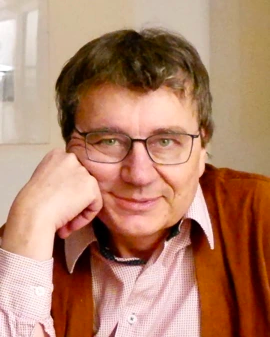OSA Virtual Vision Science Seminars
Hosted By: Vision Technical Group
28 January 2021 12:00 - 13:30
Eastern Time (US & Canada) (UTC -05:00)You are invited to join the OSA Vision Technical Group for a virtual seminar featuring presentations from Larry Thibos, Professor Emeritus, School of Optometry at Indiana University, and Michael Bach, Professor Emeritus and Former Head Visual Function, Eye Center at University Medical Center Freiburg.
This virtual seminar will review fundamental vision science concepts, including visual acuity as a function of retinal illumination and other factors. In addition, the seminar will discuss understanding the limitations of visual perception through optical illusions and visual phenomena as well as future directions in the field. Details of the talks to be presented by our speakers follow. Each talk will be 30 - 40 minutes in length and will be followed by a question and answer period.
Imaging in our brain – Optical illusions neither “trick the eye” nor “fool the brain” presented by Michael Bach:
Our vision appears to us totally effortless, yet perception of images, objects, colour and motion involves complicated, ill-understood processes in our brain. We usually assume that what we see is pretty much what our eyes have seen and then have transmitted to the brain. Rather, our visual system continuously “invents” an inner world as a basis for understanding and planning, based on incomplete information. This rests on experience, both evolutionary and individually; more formally this is the Bayesian interpretation of perception. When experience does not fit the current situation, ensuing missteps of our perceptual apparatus are called “optical illusions” and can reveal some of these endogenous mechanisms. Thus, optical illusions neither "trick the eye" nor "fool the brain". The talk will interactively present demonstrations of these processes, organized along the visual dimension luminance, colour, motion, space, and gestalt.
Starbursts: their nature, origin, and visual importance presented by Larry Thibos
Starbursts, an entoptic phenomenon that has been observed and recorded throughout history, are dim lines that appear to radiate from stars and planets when viewed against the night sky. Psychophysical experiments, combined with optical analysis, indicate that starbursts are the subjective manifestation of light caustics formed on the retina by the eye's optical aberrations. Starbursts have special relevance to visual astronomy because they reduce the visibility of celestial objects and hamper the spatial resolution of neighboring objects (e.g., the recent conjunction of Jupiter and Saturn).
About the Presenters:
 Michael Bach, Professor Emeritus and Former Head Visual Function, Eye Center at University Medical Center Freiburg
Michael Bach, Professor Emeritus and Former Head Visual Function, Eye Center at University Medical Center Freiburg
After studying physics, computer science and psychology Michael Bach did his PhD thesis recording from single units in monkey visual cortex. He went on to work in the Eye Center of Freiburg university with patients suffering from eye diseases to arrive at early diagnosis. In his research he employed mainly electrophysiological and psychophysical methods to understand the workings of our vision in visual acuity (down to nearly blindness), contrast vision, motion perception, colour vision, gestalt perception, etc. With 300+ papers (H index 60), he is interested in all things vision from basic science to ophthalmological pathophysiology. For eight years he was president of the International Society for Clinical Electrophysiology of Vision. An interactive playful public outreach project on visual phenomena and optical illusions can be perused here https://michaelbach.de/ot/.
 Larry Thibos, Professor Emeritus, School of Optometry, Indiana University
Larry Thibos, Professor Emeritus, School of Optometry, Indiana University
Larry N. Thibos is Professor Emeritus at the Indiana University School of Optometry, USA. A native of Michigan, he earned B.S. (1970) and M.S. (1972) degrees in Electrical Engineering at the University of Michigan. He obtained the Ph.D. degree in Physiological Optics (1975) at the University of California, Berkeley, for research on the neurophysiological mechanisms of sensitivity control in the vertebrate retina. During the period 1975-1983 he was a Research Fellow at the John Curtin School of Medical Research at the Australian National University in Canberra, Australia, where he investigated the neurophysiology of retinal information processing. In 1983 Thibos joined the Visual Sciences faculty of the School of Optometry at Indiana University where he taught vision science until his retirement in 2012. His research interests include the effects of optical aberrations of the eye on visual performance, the limits to spatial vision imposed by retinal architecture, and the variation of visual capacity across the visual field. Professor Thibos was elected Fellow of the Optical Society (1996), serving as topical editor for Journal of the Optical Society of America (1993-1999), Chair of the Vision Division (1996-1998), and member of the OSA Executive Council (1996-1998).
